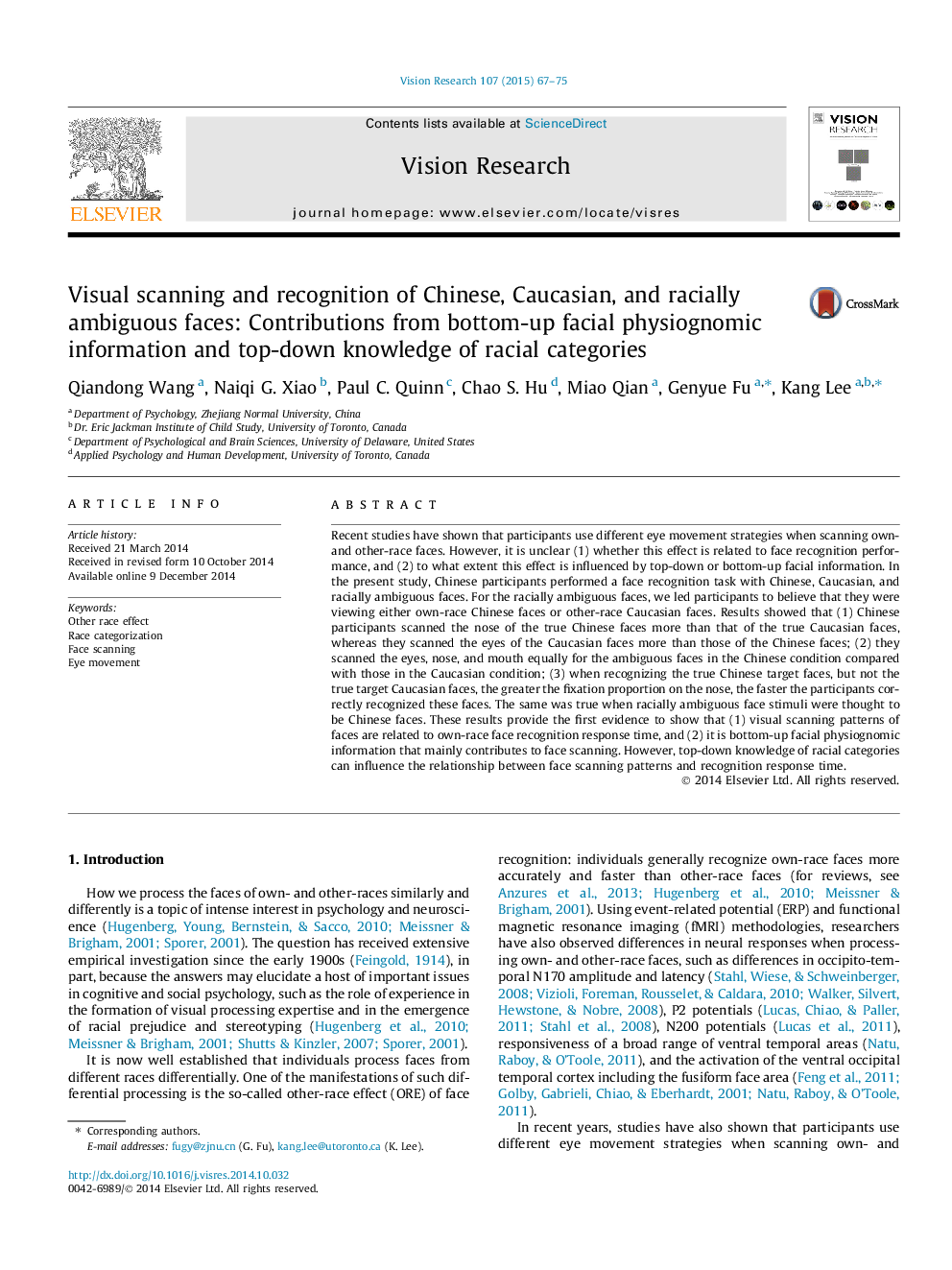| کد مقاله | کد نشریه | سال انتشار | مقاله انگلیسی | نسخه تمام متن |
|---|---|---|---|---|
| 6203372 | 1603187 | 2015 | 9 صفحه PDF | دانلود رایگان |
- Chinese participants visually scan Chinese and Caucasian faces differently.
- Nose-centric scanning is related to target Chinese face recognition performance.
- Facial physiognomic information contributes to face scanning and recognition.
- Knowledge of racial categories contributes to face scanning and recognition.
Recent studies have shown that participants use different eye movement strategies when scanning own- and other-race faces. However, it is unclear (1) whether this effect is related to face recognition performance, and (2) to what extent this effect is influenced by top-down or bottom-up facial information. In the present study, Chinese participants performed a face recognition task with Chinese, Caucasian, and racially ambiguous faces. For the racially ambiguous faces, we led participants to believe that they were viewing either own-race Chinese faces or other-race Caucasian faces. Results showed that (1) Chinese participants scanned the nose of the true Chinese faces more than that of the true Caucasian faces, whereas they scanned the eyes of the Caucasian faces more than those of the Chinese faces; (2) they scanned the eyes, nose, and mouth equally for the ambiguous faces in the Chinese condition compared with those in the Caucasian condition; (3) when recognizing the true Chinese target faces, but not the true target Caucasian faces, the greater the fixation proportion on the nose, the faster the participants correctly recognized these faces. The same was true when racially ambiguous face stimuli were thought to be Chinese faces. These results provide the first evidence to show that (1) visual scanning patterns of faces are related to own-race face recognition response time, and (2) it is bottom-up facial physiognomic information that mainly contributes to face scanning. However, top-down knowledge of racial categories can influence the relationship between face scanning patterns and recognition response time.
Journal: Vision Research - Volume 107, February 2015, Pages 67-75
